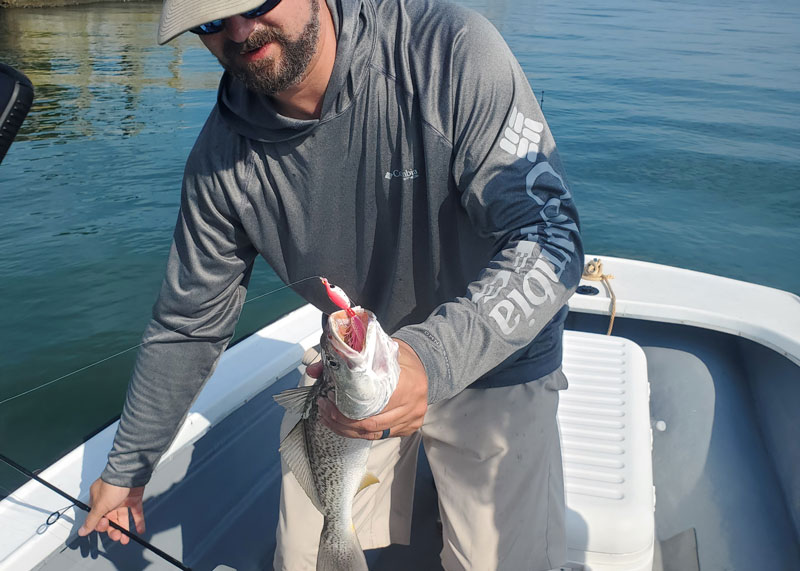Tandem rigs are an excellent way to jig deep for suspended fish, like weakfish or striped bass in the Chesapeake Bay. They’re also effective when trout school up just off the coast. Wait a sec—we’ve been seriously lacking in sea trout both in the bay and along the coastal inlets for many years, haven’t we? Yes. In several recent seasons, however, some weakfish did make a showing and this spring we heard of a 30-incher popping up in the bay behind Ocean City. And tandem rigs are also great for targeting big stripers that are holding down deep below schools of smaller fish, so this is a rig you want to be familiar with. You may find an option or two on the tackle store shelves, but pre-tied tandems can be tough to find, especially when you want to choose the specific lures and lure sizes. That means most of us will tie our own tandems. Check out this short video made by our head fish-head Lenny Rudow, for boats.com. In it, he takes us step-by-step through the process of tying our own tandem rigs.
How and when will you know the time is right to reach for a tandem? Just remember that this rig will prove most effective when the fish are suspended deeper than 25’ or 30’ and you can’t get your usual (light) jigs and rigs down to them. Also remember to work these rigs with a sweeping up-and-down motion of the rod, and set the hook the moment you feel a hit.

One final tip: if sea trout make a showing, don’t forget to try “dead-sticking”. Simply drop your tandem down to the fish’s level, hold it steady, and let the gentle rocking and rolling of your boat give it all the action. Though it seems like this tactic should be a dead-end, when it comes to trout, it’s often deadly.
Editor's note: This article was last updated in June of 2024.